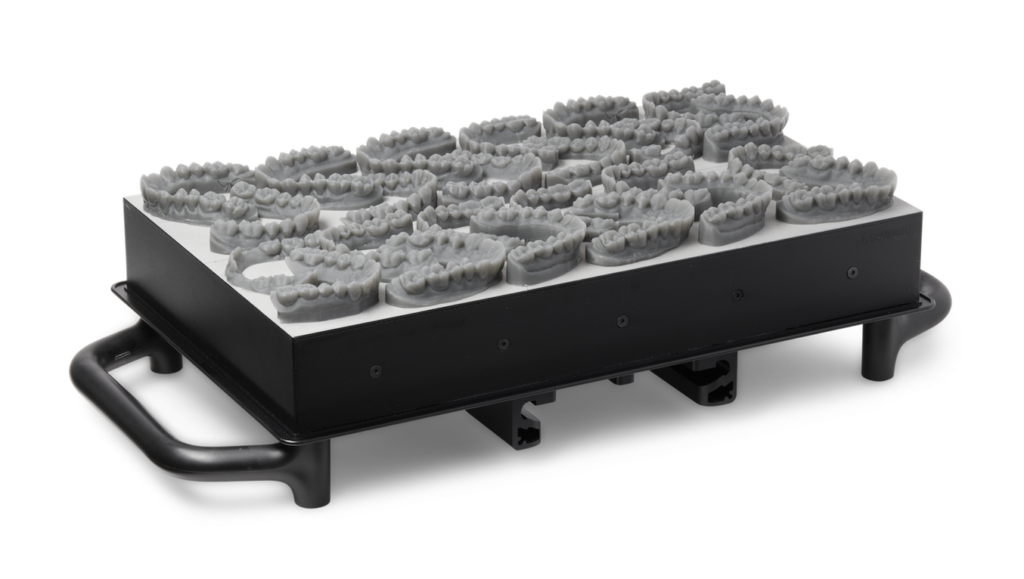Formlabs CEO Max Lobovsky will be taking part in the SmarTech – Stifel AM Investment Strategies 2021 summit on September 9, 2021. Formlabs began when MIT students Lobovsky and David Cranor decided to found a 3D printing business. The pair looked at all of the available technologies and concluded that stereolithography (SLA) wasn’t available on the desktop. In turn, they found a way to intelligently engineer an SLA/vat polymerization system that would work reliably for desktop users. The pair needed investment and after a long journey found it from Khosla and other significant investors. For the next step they turned towards a then unproven crowdfunding platform, Kickstarter.
The young company found over 2,000 backers who gave it over $2.9 million. Formlabs made good on its promises and launched the Form 1 3D printer. Whereas desktop material extrusion printers were all open and often didn’t come with company software, Formlabs wanted to control every aspect of the 3D printing experience. Therefore, machines are closed (in principle, some can use external resins) and are made to work with Formlabs’ very own Preform software. Additionally, the company has industry-leading user experience and UI. Formlabs 3D printers just work and, time and time again, print out small, detailed parts well.

Formlabs then developed the Form 2, a much more complete system. Post-processing for SLA requires washing parts and UV curing them, so the company came out with a unit that could do that. Then, with the much larger Form 3L system for $11,000, as well as the Form 3B for medical and dental and Form 3BL for volume production in those sectors. The firm also spent a lot of time developing resins and even bought its very own resin producer to tightly control this process.

Formlabs wants to control everything and make the entire 3D printing experience seamless. This desire and strong focus on excellence has given it a family of tightly managed printers that work well. It continues to dominate the desktop SLA segment, although low-cost Chinese and Prusa SLA systems may eat into that at one point. The firm is forging ahead with the Fuse 1, a desktop powder bed fusion system. The Fuse 1 is $18,000 and, for $31,000, comes with all of the post-processing equipment that you need. The system took much longer than expected to make, but initial impressions are good.

Rather than go for a SPAC, Formlabs opted for further VC rounds collecting more than $253 million. The company has spent the money making materials, printers, and rolling out a global organization. Formlabs seems ideally poised to do well on the desktop. Machines would seem to have good margins. Through tight control over materials, the company is doing much better than peers in selling and profiting from feedstock, as well. This should make it much more profitable and give it much more cash than comparable material extrusion companies, who have lower cost machines and make very little on materials if anything.

For jewelers, designers, dentists and businesses involved in casting, Formlabs is a natural choice. Customers enjoy their support, service, and the overall experience. This points to it being difficult to dislodge Formlabs through competing products. For certain groups, especially large corporate innovation labs, prototyping labs, and workshops, the Fuse 1 will be a natural sell to place adjacent to those already-deployed Formlabs systems. This ability to cross sell to existing customers should be a lucrative opportunity going forward. This is especially the case since customer loyalty and satisfaction with Formlabs are very high.
The company should always be a bit paranoid about new entrants. Most Chinese material extrusion firms are now also offering DLP or SLA 3D printers and these will improve over the years. Obviously, if it sits still, it will be dead. But, between its $3,000 Form 3 systems and the next market segment, there is about $12,000 in sales price. So, the company can still go further fleshing out its existing product line. Above this, highly productive $70,000 DLP production systems have been slow to change, so there could be more opportunities there.
In powder bed fusion, Sinterit and Sintratec have made little impact with lower priced systems. That market still needs to be developed. But, an integrated offering with comparatively little hassle seems to be the way to do it.
At the same time the company could do more for industry-specific solutions and materials for hearing aids, casting, thermoforming, and much more. This is one company poised for growth and potentially and IPO. Formlabs CEO Max Lobovsky will take part in the SmarTech – Stifel AM Investment Strategies 2021 summit on September 9, 2021, where he will be able to shed more light on overall market and his company’s role in it. Register for free here.
Subscribe to Our Email Newsletter
Stay up-to-date on all the latest news from the 3D printing industry and receive information and offers from third party vendors.
You May Also Like
Precision at the Microscale: UK Researchers Advance Medical Devices with BMF’s 3D Printing Tech
University of Nottingham researchers are using Boston Micro Fabrication‘s (BMF) 3D printing technology to develop medical devices that improve compatibility with human tissue. Funded by a UK grant, this project...
3D Printing Webinar and Event Roundup: April 21, 2024
It’s another busy week of webinars and events, starting with Hannover Messe in Germany and continuing with Metalcasting Congress, Chinaplas, TechBlick’s Innovation Festival, and more. Stratasys continues its advanced training...
3D Printing Webinar and Event Roundup: March 17, 2024
It’s another busy week of webinars and events, including SALMED 2024 and AM Forum in Berlin. Stratasys continues its in-person training and is offering two webinars, ASTM is holding a...
3D Printed Micro Antenna is 15% Smaller and 6X Lighter
Horizon Microtechnologies has achieved success in creating a high-frequency D-Band horn antenna through micro 3D printing. However, this achievement did not rely solely on 3D printing; it involved a combination...





























